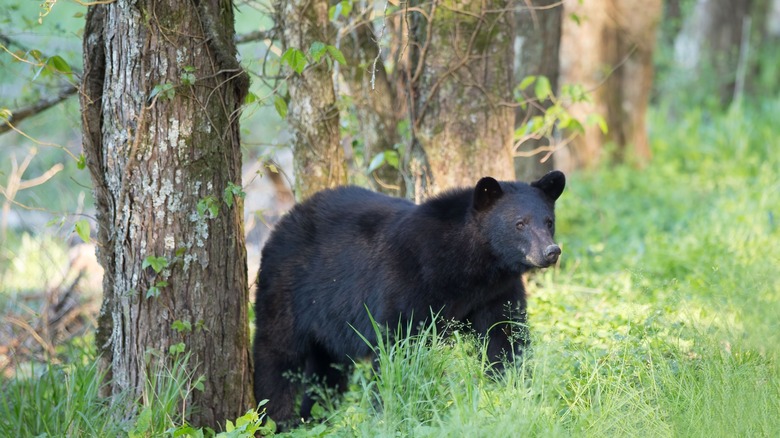The Observation Tower at Clingmans Dome offers 360-degree views
Clingmans Dome in the Great Smoky Mountains National Park is the third tallest mountain in the eastern United States. Visitors can reach the 6,643-foot summit by driving to the parking lot at the end of Clingmans Dome Road. The road offers beautiful scenery even before you reach its endpoint, but keep in mind that it’s closed from December through March. To get to the top of the dome, you must follow a half-mile paved but steep trail on foot after parking your car at Clingmans Dome Road. The summit of Clingmans Dome features an observation tower with 360-degree views of the Great Smoky Mountains.
Photographers and lovers of the great outdoors alike enjoy the summit of Clingmans Dome because of its gorgeous sunset views. Visiting at this time of day is so popular that photographers begin to form a line before the sunset occurs. Serious hikers who brave the lengthy Appalachian Trail will pass by Clingmans Dome as well.
Watch out for bears while camping at Great Smoky National Park

Aside from Clingmans Dome, other popular things to see in the Great Smoky Mountains National Park include multiple waterfalls. Many of these like Grotto Falls and Hen Wallow Falls are found along hiking trails, but some are close to paved roads. Meigs Falls, the Sinks, and Place of a Thousand Drips are all accessible by car. Park visitor centers also have maps that mark the trails and waterfalls.
There are campsites within the Great Smoky Mountains National Park as well. Backcountry sites are in more remote locations and are best found by map. Frontcountry sites have the usual campground amenities like restrooms, but no electric or water capabilities for individual camping spots. There are 10 of these frontcountry sites and reservations are required through Recreation.gov. Any type of camping in the park could see black bears. Remember that wildlife is valuable as all species positively contribute to their landscapes. Therefore — to help them and others stay safe — do not approach bears, keep food locked away, and take all belongings and trash with you at the end of your trip.

